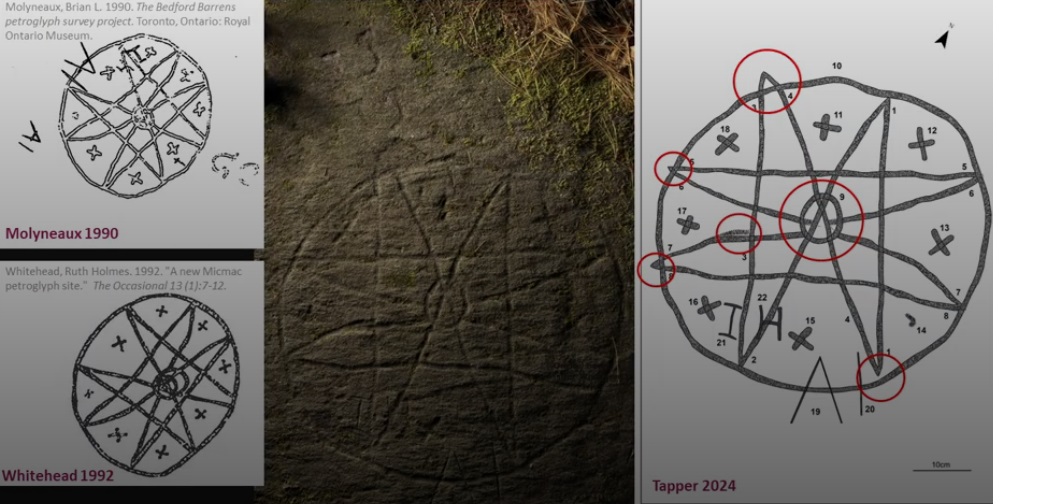The Culture and Heritage Committee is grateful to Bryn Tapper for sharing his research findings on an iconic cultural Mi’kmaq symbol.
Bryn , a graduate student at Memorial University studying archaeology, shared findings from his doctoral research into the role of rock art in the Maritimes and its role in Indigenous societies – specifically pertaining to Indigenous petroglyphs found throughout Atlantic Canada.
Bryn’s research into pre-and-post-contact Mi’kmaq and Wolastoq (Maliseet) rock art in the Maritimes provided new academic insights into the rock carvings at the Kwipek (Bedford Barrens) and Kejimkujik National Park.
Presenting at the December 3rd meeting of the Culture and Heritage Committee in Halifax on the 16 petroglyph sites across Atlantic Canada, Bryn put forward theories about the origins and the inspiration for the Bedford petroglyphs – and their purpose and role.
Bryn explained how he used digital survey techniques like multi-light imaging and 3D-structured light scanning – to examine the rock carvings, and the markings used to make them.
Specific attention was paid to the symbols of the eight-pointed star and a fertility glyph found at both the Bedford site and Kejimkujik National Park, citing previous academic research on the petroglyphs and two casts made of the etchings.
Bryn told committee members he identified tool marks in some of the lines carved into the stone to make the glyphs, which are associated with metal tools. He theorized that the images are post-contact in origin on account of those metal tool marks.
In response to the presentation, members of the committee noted that there are other interpretations of the rock art at the Kwipek/ Bedford Barrens site.
Committee members suggested that the etchings and markings being from metal tools doesn’t necessarily mean the eight-point star is pre-contact in origin. Members also noted that the image Bryn and the sources he drew his research from identified as a fertility symbol could also be interpreted as symbolic of maternity or fishing.
Mi’kmaq Co-Chair Tim Bernard said future research should integrate both Indigenous knowledge and a Western approach, incorporating an Etuaptmumk (Two-Eyed Seeing) approach, something Bryn expressed an interest in.
An integrated approach would bring Mi’kmaq perspectives and knowledge to the table, Tim said.
He added that the characteristic design at the Bedford petroglyphs is iconic to the Mi’kmaq people, and “we understand it’s worth further investigation.”

